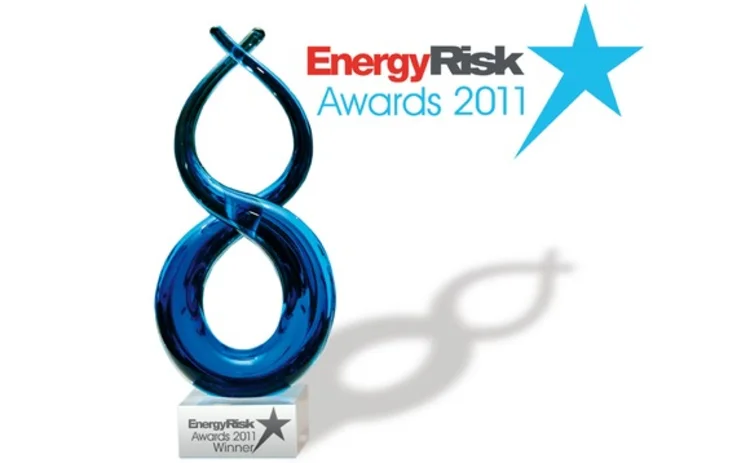
Energy Risk Base Metals House of the Year Award: SGCIB

Société Générale Corporate & Investment Banking (SG CIB) guided its clients through a year of extreme price volatility in base metals last year, using its deep understanding of the production risk of large and small miners, and its strength in both long-term structured transactions and flow execution, earning it the Base Metals House of the Year award.
Base metals prices were extremely volatile in 2010, bringing both producers and consumers back to hedging. But with the opportunities came challenges; miners, especially who were on the wrong side of a market move, were faced with a steep negative mark-to-market movement, with the resultant collateral calls potentially creating cashflow problems.
Instead of increasing margin calls to protect against credit risk as many banks did at this time, SG CIB began providing some unmargined lines to mining firms, even taking over margined positions that miners had with other lenders and making them unmargined.
"To avoid a cash constraint we can provide some unmargined lines - transforming risk on the price into risk of performance. But in that case what we really need to see is the miner performing, producing the material, and delivering the material," explains Xavier Lannegrace, managing director of base metals, precious metals and agriculture at SG CIB in Paris.
Taking on performance risk requires a deep understanding of the specifics of production factors in mining and SG CIB is a leader in this respect. As well as having in-house experts in geology, metals and mining finance, it has set up a small division-specific risk team outside the bank's central counterparty valuation adjustment desk. "One of the initiatives we took over the last three years was to add within the commodity division people who are not sales but who focus on understanding the client structure, risks and needs, and are very involved in managing the relationship with them," says François Combes, global head of trading at SG CIB's commodity derivatives business.
As a major player in the base metals space, SG CIB is unusual in taking on smaller miners that may need loans of only $25 million. Often having only one producing asset, smaller miners are more exposed to market price swings, and require more hedging, as well as guidance on when to implement hedges.
One such client was Mercator, a Canadian mining company whose principle asset is the Mineral Park copper-molybdenum mine in Arizona. Mineral Park was going through an expansion to double its processing capacity, and SG CIB was providing non-recourse financing for the project, refinancing the existing note with a $130-million loan including a longer tenor and lower pricing. Mercator had been caught in a liquidity squeeze in the metals price crash of Q2 2008 and wanted to buy protection against a repeat of that scenario. SG CIB discussed several options with Mercator, and eventually agreed to structure a hedge protocol that involved the bank executing the whole hedge, fixing prices to London Metal Exchange (LME) settlement prices, less an agreed credit margin. This was seen as the most transparent structure with the least execution risk. The bank also advised Mercator on how the full hedge volume could be executed over time to minimise market impact.
Outside mining, the bank is attempting to get more business from the consumer-end of the market and last year opened a Shanghai office to provide hedging services to corporates in China.
As well as the project finance and structured transactions sides of the business, SG CIB is also an LME ring-dealing member, active in underlyings including tin, copper, lead, aluminium, nickel and zinc.
Most metals houses tend to either focus on the structured transaction side, or the pure flow aspect of the derivatives market. But, in 2010, having a diversified business served SG CIB well. "We tried to build this hybrid of a bank and a broker at once. We want to keep both pillars alive. Most houses have both pillars as well, at least technically, but they tend to be of one or the other culture. Not us." says Combes.
Click here to view the article in PDF format.
Only users who have a paid subscription or are part of a corporate subscription are able to print or copy content.
To access these options, along with all other subscription benefits, please contact info@risk.net or view our subscription options here: http://subscriptions.risk.net/subscribe
You are currently unable to print this content. Please contact info@risk.net to find out more.
You are currently unable to copy this content. Please contact info@risk.net to find out more.
Copyright Infopro Digital Limited. All rights reserved.
As outlined in our terms and conditions, https://www.infopro-digital.com/terms-and-conditions/subscriptions/ (point 2.4), printing is limited to a single copy.
If you would like to purchase additional rights please email info@risk.net
Copyright Infopro Digital Limited. All rights reserved.
You may share this content using our article tools. As outlined in our terms and conditions, https://www.infopro-digital.com/terms-and-conditions/subscriptions/ (clause 2.4), an Authorised User may only make one copy of the materials for their own personal use. You must also comply with the restrictions in clause 2.5.
If you would like to purchase additional rights please email info@risk.net
More on Awards
Collateral management and optimisation product of the year: CloudMargin
Delivering the modern blueprint for enterprise collateral resilience
Flow market-maker of the year: Citadel Securities
Risk Awards 2026: No financing; no long-dated swaps? “No distractions,” says Esposito
Pricing and analytics: fixed income – Quantifi
Quantifi delivers high-performance, transparent and adaptable pricing and risk analytics for fixed income and credit markets
Derivatives house of the year: Citi
Risk Awards 2026: Rev up, RWAs down, as US bank gets back on track (with added XiNG and XiP)
Technology vendor of the year: SS&C Algorithmics
Risk Awards 2026: From cloud, to chips, to maths tricks – vendor getting more out of existing tech
SS&C Algorithmics: winner’s interview with Curt Burmeister
SS&C Algorithmics wins three categories in this year’s Markets Technology Awards in addition to Technology vendor of the year at the Risk Awards
Best vendor for system support and implementation: Murex
Murex wins Best vendor for system support and implementation at the Markets Technology Awards 2026
Pricing and analytics: cross-asset and structured – Murex
Murex wins Pricing and analytics: cross-asset and structured at the Markets Technology Awards 2026 thanks to its MX.3 platform







